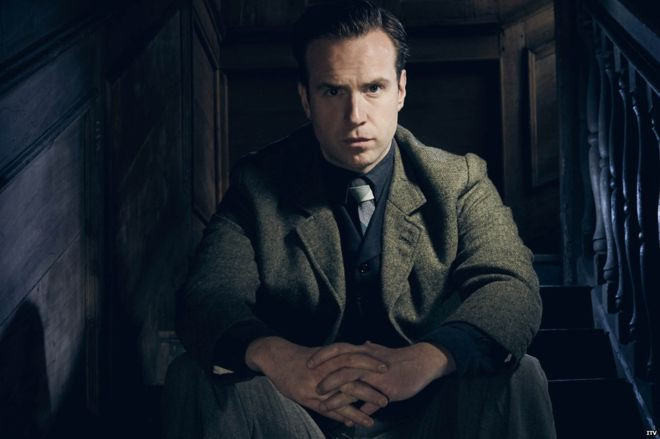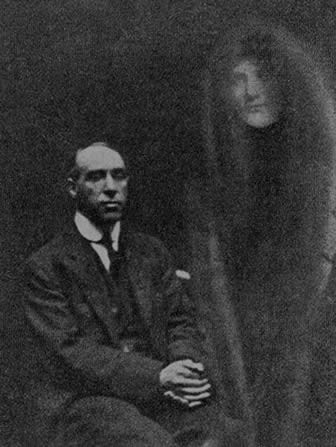The real story behind Harry Price: Ghost Hunter, the UK's most celebrated psychic investigator

Rafe Spall takes the lead role in ITV's new film Harry Price: Ghost Hunter. Set in 1920s London, the film follows the career of Britain's most famous real-life ghost hunter and sceptic, Harry Price, who investigated the paranormal and supernatural. But who was the real-life psychic detective and con artist?
According to Spall: "Harry Price was a famous real-life person in the 1920s. He was a 'psychical' researcher, which means that his area of expertise lies within the scientific approach to the study of supernatural, spiritual, hauntings and mediums. He would debunk myths, ghosts, séances and mediums and show other explanations, be it scientific or logical.
"There was a massive proliferation in the 1920s of people who were desperate to make connections with a whole generation of men lost in the war. Harry saw these practices as praying on the bereaved in order to make money. Harry started to feel that his scientific reasoning was ruining peoples desire to contact the deceased. He began to pretend he was in contact with the supernatural, using his knowledge to trick the bereaved."
Exposing fraudulent mediums and psychics
Born in 1881, Harry Price experienced first-hand paranormal phenomena including a poltergeist which he said took place at a haunted manor house in Shropshire. But later in life, he worked tirelessly to expose fake spiritualists. His first major success in psychical research came in 1922 when he 'exposed' the spirit photographer William Hope.
In February 1922, Price demonstrated that Hope was fraudulent during tests at the British College of Psychic Science. Price wrote in his report "William Hope has been found guilty of deliberately substituting his own [photographic] plates for those of a sitter... It implies that the medium brings to the sitting a duplicate slide and faked plates for fraudulent purposes."

He earned the enmity of Sherlock Holmes author Sir Arthur Conan Doyle who threatened to have Price evicted from his laboratory and attacked him for writing "sewage" about spiritualists. Doyle, a committed spiritualist, tried for years to have Price take his pamphlet out of circulation. Price wrote despairingly: "Arthur Conan Doyle and his friends abused me for years for exposing Hope."
One of Price's most famous cases involved the fake medium Helen Duncan. In 1931, the National Laboratory of Psychical Research paid £50 to Duncan so that she could be examined under scientific conditions. She was suspected of swallowing cheesecloth which was then regurgitated as "ectoplasm".
Duncan reacted strongly at attempts to x-ray her, running from the laboratory and making a scene in the street, where her husband had to restrain her, destroying the controlled nature of the test. Price wrote that Duncan had given her fake ectoplasm to her husband to hide.
According to Price: "The medium screamed and the rest of the 'teleplasm' went down her throat. This time it wasn't cheese-cloth. It proved to be paper, soaked in white of egg, and folded into a flattened tube... Could anything be more infantile than a group of grown-up men wasting time, money, and energy on the antics of a fat female crook?"
He is best known for his investigation of Borley Rectory in Essex, England which earned the title of "the most haunted house in England" after Price published a book about it in 1940. He lived in the rectory from May 1937 to May 1938 and wrote of his experiences in the book. But Price was later accused of faking evidence of psychic phenomena. After Price's death in 1948, three members of the Society for Psychical Research, investigated Price's claims about Borley. Their findings were published in a 1956 book, The Haunting of Borley Rectory, which concluded Price had fraudulently produced some of the phenomena.
The stage magician and scientific sceptic James Randi wrote that Price conducted some genuine research but lived "a strange mixture of fact and fraud." According to the most recent biography of Price by Richard Morris, Price fabricated various pieces of evidence for and against psychic phenomena.
Price suffered a massive heart attack at his home in Pulborough, West Sussex and died on 29 March 1948. He bequeathed his library of magical literature to the University of London. The unique collection contains rare and ancient volumes on the arts of magic and summoning ghosts. The library used to be based on the eighth floor of Senate House in London.
The collection is comprised of nearly 13,000 books on witchcraft and the occult, prophecies, abnormal phenomena such as ghosts, mediums and spiritualism, scientific phenomena such as animal magnetism and eighteenth-century work on automata, and psychical research. The books date from 1472 to the 21st century.
A conflicted personality
To Neil Spring, author of The Ghost Hunter, upon which the ITV film is based, Price was "an elusive character; to some he was a scientist, a discoverer who was determined to prove the truth about life after death; to others, he was a fierce sceptic, the scourge of every spiritualist medium in London with something to hide.
"I'm not sure anyone could claim to have known the true man behind the façade that Harry Price presented to the media, his followers and his critics. Harry was a businessman. But he was a skilled conjuror (and member of the Inner Magic Circle), a photographer, engineer and journalist. He was very defensive about his working-class origins, constantly seeking academic recognition and validation, and craving fame and publicity."
Harry Price: Ghost Hunter will be on ITV1 on 27 December at 2030 GMT
© Copyright IBTimes 2025. All rights reserved.






















